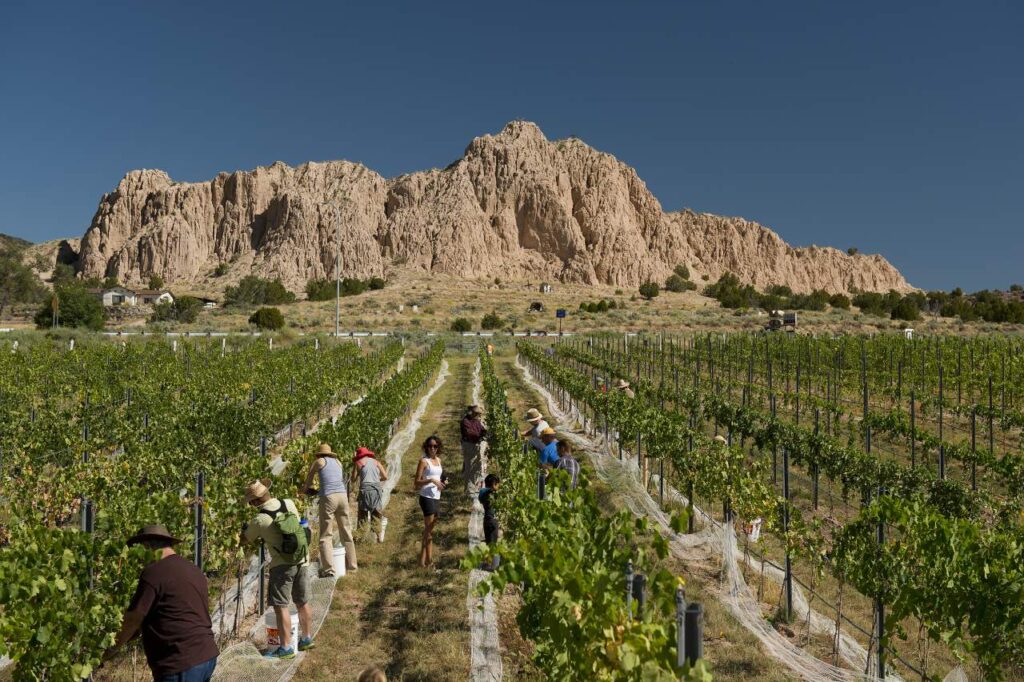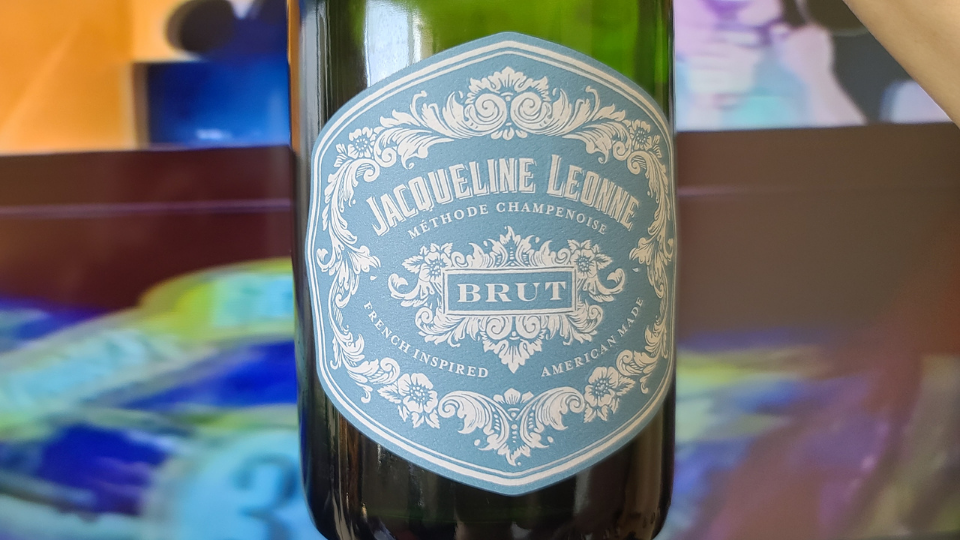Enchanting Star, Spangle, and Banner
Jacqueline Léonne embodies the spirit of Champagne tailored for “New World” wine aficionados. Her father imparted the secrets of capturing effervescence in a bottle, making her a true sorceress of sparkling wines. I approach such wines with a simple motto: “Don’t think, just drink.” Fast forward 25 years, and she manages the family Champagne house in France while her siblings run the winery in Albuquerque, New Mexico, USA. There’s something enchanting in the Taos air that has been channeling sparkling wine magic since the 1980s, starting with the iconic Gruet winery. Gruet is credited with putting New Mexico sparkling wine on the global map, and Jacqueline Léonne continues this tradition. Most U.S. states would naturally gravitate toward still wines, but New Mexico has embraced sparkling wines as its forte. Like Gruet, Jacqueline Léonne represents the birth of American success stories in winemaking, minus the eccentric Taos rituals.
The Enchanting Land of New Mexico

Vivác Winery hosts picking parties, which includes a wine dinner and tour. Photograph courtesy of Douglas Merriam
New Mexico, known as the “Land of Enchantment” since the mid-1930s, beckons tourists with its breathtaking landscapes and rich history. This phrase, “Tierra del Encanto” in Spanish, aptly describes the scenic beauty and prosperity of New Mexico. Spanish influence on viticulture is undeniable, with plantings of the modest Mission grape. Spain’s efforts to colonize the Americas led to a focus on wine made from this grape, avoiding competition with the Spanish Crown. However, history had a twist in store, as independence brought an appreciation for quality wines made from European Vinifera grapes.
Enchanting Converts, Old and New
New Mexico’s wine journey mirrors its enchanting nickname. It boasts some of the most intriguing high-elevation vineyards, nestled at an astonishing 4,000 feet. The transformation from the Mission grape era to a contemporary wine industry revolves around traditional European grape varieties. Today, the state proudly hosts over thirty thriving wineries. New Mexico, along with its Lone Star neighbor, Texas, is credited as among the first U.S. states to produce wine from the Vitis Vinifera species, starting in the 1600s. These Vitis Vinifera grapes, of European origin, were brought to America by our forefathers and European immigrants. The significance of using Vitis vinifera grapes lies in their abundance of phenolic compounds, resulting in wines with complex flavors and excellent aging potential.
The Grape & Grain Collective
Delving into the backstory of Jacqueline Léonne’s wine might leave you scratching your head, as it’s not associated with a specific winery but rather a label. Jacqueline Léonne operates under the umbrella of Grape & Grain, an entity that represents numerous global vignerons. The wine industry is fiercely competitive, whether in your backyard or on the global stage. It’s a business driven by passion, except perhaps in the world of sales. Sales are sales, no matter the industry, promoting a unified approach. Unless a producer has substantial financial resources, exposing their wines is challenging. Most wines are crafted with care, time, and limited production. This is where collectives like Grape & Grain step in to lend a helping hand.
Grape & Grain collectives are emerging worldwide, owning winemaking facilities and tasting rooms across five American states, including New Mexico. They have also expanded to select international locations and remain committed to research and development to enhance winemaking practices. Companies like Grape & Grain play a crucial role in offering consumers access to unique wine diversity that might otherwise remain undiscovered and I do support them.
Jacqueline Léonne: A Captivating Experience

Jacqueline Léonne A Captivating Experience
So, what do I make of Jacqueline Léonne’s American-Made Sparkling Brut? It’s a blend of 75% Chardonnay and 25% Pinot Noir, nurtured in the sandy-clay soils of Albuquerque. Pouring it into a glass reveals a medium gold hue with fading dusty pink undertones. The effervescence bursts forth aggressively from the bottle, gradually mellowing into a more relaxed bubble dance. On the nose, it offers a bouquet of bruised red and yellow apples, toasted brown butter, spiced ginger, and hints of toasted cocoa nibs. The palate brings out the apples more prominently, with citrus notes hitting mid-palate, accompanied by a lively mousse. It then transitions into flavors reminiscent of crème brûlée French toast, edged with granite minerality, concluding with a slightly bitter toasted black walnut medium length finish .
I found it a delightful drink, though I couldn’t help but notice a touch of oxidative nuance from start to finish. Whether this was a deliberate winemaking choice, an effect of the vintage, or a unique twist added at the end remains uncertain. Regardless, the ultimate verdict lies in your hands. This wine is also produced in rosé and semi-sweet styles, perfect for Mimosas or Bellinis. If you’re in urgent need of this bubbly, Drizzly has you covered, with delivery times depending on your location, but generally within ten minutes. And if you find yourself unable to resist, it conveniently travels in a four-pack of cans. With the median age of Albuquerque’s population at 35, it’s either a result of Taos’ spiritualism or simply the abundance of juicy wines popping up all over this enchanted state.
What American-made wine are you enjoying today?
Ciao! I hope you enjoyed the article JACQUELINE LÉONNE BRUT
Please comment below. I Love your feedback. Thank you and remember Taste Small Live Big!
Follow me on Instagram@epicurean.angel

